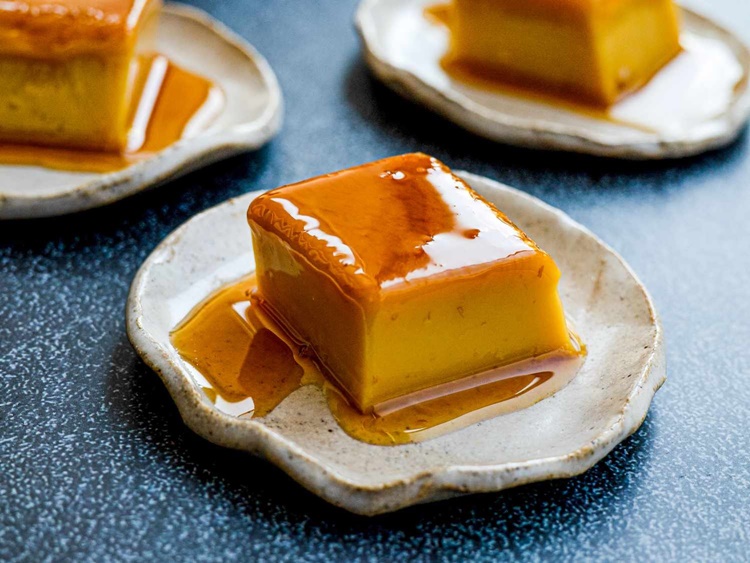LECHE FLAN – Here is the origin and history of this mouth-watering Filipino dessert that you probably didn’t know.
Leche flan, often referred to simply as “flan,” is a beloved dessert in Filipino cuisine known for its creamy texture and rich caramel flavor. This delicious treat holds a place in the hearts of Filipino people and is a favorite during special occasions.
Leche flan is a type of custard made from a combination of eggs, condensed milk, evaporated milk, and sugar. The mixture is then poured into molds and steamed or baked until set.

Once cooked, the flan is inverted onto a serving dish, revealing a smooth custard with golden caramel syrup drizzling down its sides. The flan is cooked in a steamer or bain-marie (water bath) until set, usually taking around 30 to 45 minutes.
While the classic leche flan recipe remains popular, some variations incorporate ingredients like cream cheese, coconut milk, or fruit flavors such as mango or ube (purple yam).
Leche flan is often enjoyed on its own as a decadent dessert, but it can also be served alongside slices of fresh fruits or paired with whipped cream or ice cream for an extra indulgent treat.

The origin of leche flan traces back to the Philippines, where it has become a beloved dessert in Filipino cuisine. However, its roots can be traced to the traditional Spanish flan, which was introduced to the Philippines during the Spanish colonial period.
Spanish flan, often referred to simply as “flan,” is a custard dessert made from eggs, sugar, and milk, with variations found across different regions of Spain. When Spain colonized the Philippines for over 300 years, they brought with them their culinary influences, including the recipe for flan.
The name “leche” is derived from the Spanish word for milk, reflecting the key ingredient in the dessert. Filipinos put their own twist on this dessert, infusing it with flavors like vanilla or adding a caramelized sugar topping for extra sweetness.
